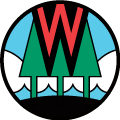Recreation
- Webpage
Management
The Turtle-Flambeau Scenic Waters Area is managed with direction from a master plan developed in 1995. The goal of the plan is to implement management practices that will perpetuate the natural character of the Flowage's shoreline. The top…
- Webpage
Maps
Property MapsTurtle-Flambeau Scenic Waters Area map [PDF]GPS Coordinates for Boat Landings and Campsites [PDF]Trail MapsBig Island Trail Map [PDF]
- Webpage
Turtle-Flambeau Scenic Waters Area
Location and Directions The Turtle-Flambeau Scenic Waters Area is located in southern Iron County in far northern Wisconsin. Access from the south is via either U.S. Highway 51 or State Highway 13; access points are off State Highway 182 on the…
- Webpage
Nature and Wildlife
The local topography is a mosaic of rolling hills, valleys, streams and bogs that reflect the glacial origin of the landscape. The flowage's shorelands are generally forested with a mixture of aspen, birch, pine, northern hardwoods and…
- Webpage
Fishing
For decades, the flowage has been highly regarded throughout the Midwest for its spectacular natural scenery and high-quality recreation, especially fishing. Historically, the Chippewa Flowage has been considered a premier muskellunge lake and…
- Webpage
Camping
Property Notice: Beginning in 2025, the 11 DNR island campsites in the Chippewa Flowage will require reservations and a camping fee to camp at these sites. Campers are encouraged to use the Cty. Hwy. CC South Boat Landing for boat access, overnight…
- Webpage
Boating, Canoeing and Kayaking
Six boat access sites provide public access to the Chippewa Flowage; four provided by the DNR, one provided by the Lac Courte Oreilles Tribe (LCO), and one provided by the Town of Hayward.
- Webpage
Snowmobiles and ATVs
Snowmobiles are allowed on public lands on designated trails only. There are a number of snowmobile trails on public and private lands near the flowage and some trails that cross the flowage on the ice. There are ATV trails on the…
- Webpage
Management
The islands and surrounding shorelands on the flowage are owned by public, tribal and private landowners. Of the 233 miles of shoreline, the state owns about 50%; remaining land ownership is approximately 30% tribal, 12% national forest …
- Webpage
Recreation
First filled in 1923, the "Big Chip" was created as a means to augment downstream water flow for power generation and flood control. Dotted with approximately 200 undeveloped islands, it is Wisconsin's third-largest lake and boasts a highly…
